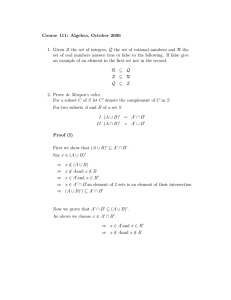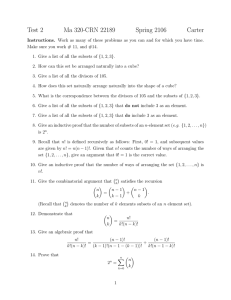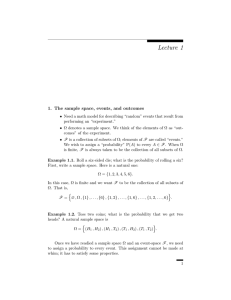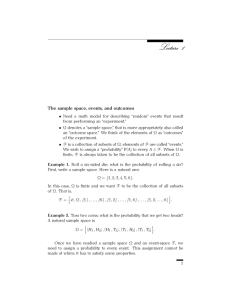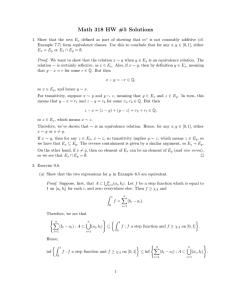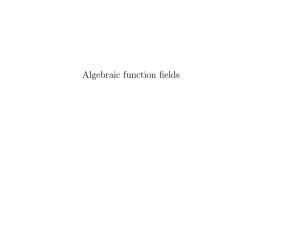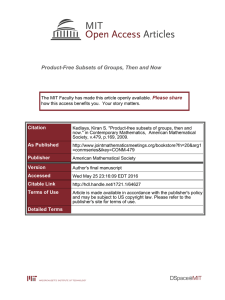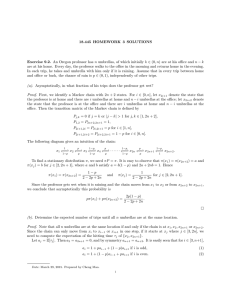A fixed proof that m extends m ∗ February 2, 2009
advertisement
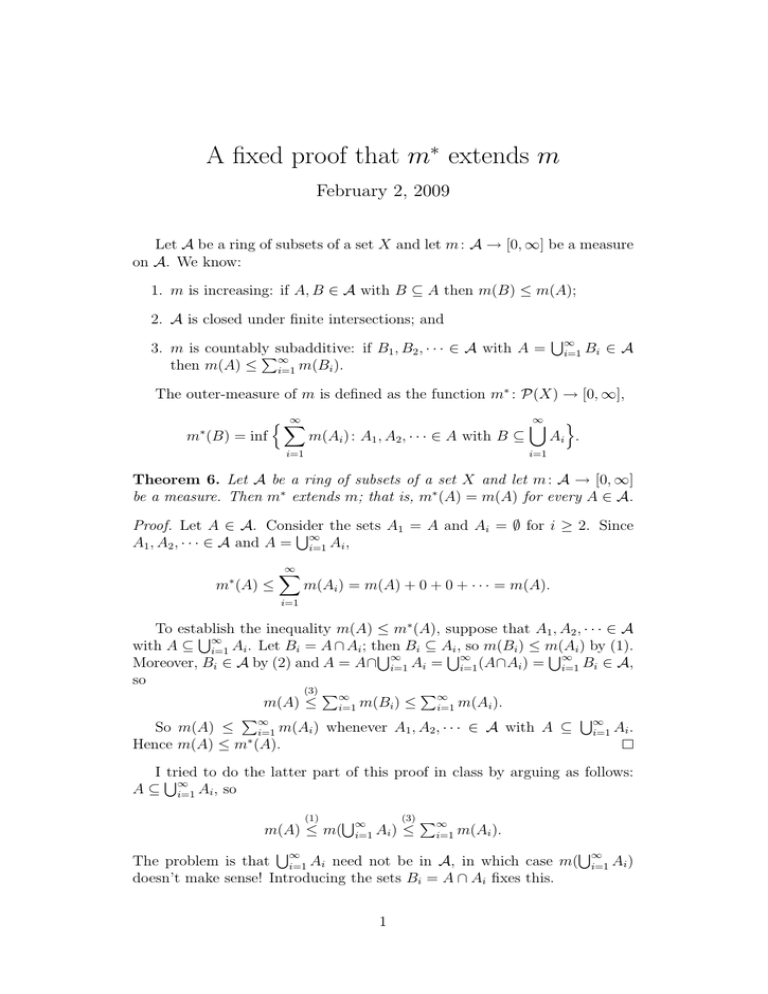
A fixed proof that m∗ extends m February 2, 2009 Let A be a ring of subsets of a set X and let m : A → [0, ∞] be a measure on A. We know: 1. m is increasing: if A, B ∈ A with B ⊆ A then m(B) ≤ m(A); 2. A is closed under finite intersections; and S∞ 3. m is countably if B1 , B2 , · · · ∈ A with A = Psubadditive: ∞ then m(A) ≤ i=1 m(Bi ). i=1 Bi ∈ A The outer-measure of m is defined as the function m∗ : P(X) → [0, ∞], ∗ m (B) = inf ∞ nX m(Ai ) : A1 , A2 , · · · ∈ A with B ⊆ i=1 ∞ [ o Ai . i=1 Theorem 6. Let A be a ring of subsets of a set X and let m : A → [0, ∞] be a measure. Then m∗ extends m; that is, m∗ (A) = m(A) for every A ∈ A. Proof. Let A ∈ A. Consider S the sets A1 = A and Ai = ∅ for i ≥ 2. Since A1 , A2 , · · · ∈ A and A = ∞ i=1 Ai , m∗ (A) ≤ ∞ X m(Ai ) = m(A) + 0 + 0 + · · · = m(A). i=1 ∗ To establish S∞ the inequality m(A) ≤ m (A), suppose that A1 , A2 , · · · ∈ A with A ⊆ i=1 Ai . Let Bi = A ∩ Ai ; then S∞ Bi ⊆ ASi ,∞so m(Bi ) ≤ m(A S∞ i ) by (1). Moreover, Bi ∈ A by (2) and A = A∩ i=1 Ai = i=1 (A∩Ai ) = i=1 Bi ∈ A, so (3) P P∞ m(A) ≤ ∞ i=1 m(Bi ) ≤ i=1 m(Ai ). P∞ S∞ So m(A) ≤ i=1 m(Ai ) whenever A1 , A2 , · · · ∈ A with A ⊆ i=1 Ai . ∗ Hence m(A) ≤ m (A). IS tried to do the latter part of this proof in class by arguing as follows: A⊆ ∞ i=1 Ai , so (1) (3) P S ∞ m(A) ≤ m( ∞ A ) i=1 i ≤ i=1 m(Ai ). S S∞ The problem is that ∞ i=1 Ai need not be in A, in which case m( i=1 Ai ) doesn’t make sense! Introducing the sets Bi = A ∩ Ai fixes this. 1


